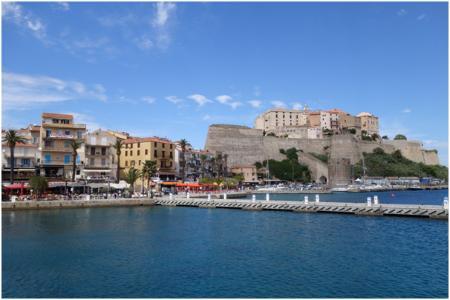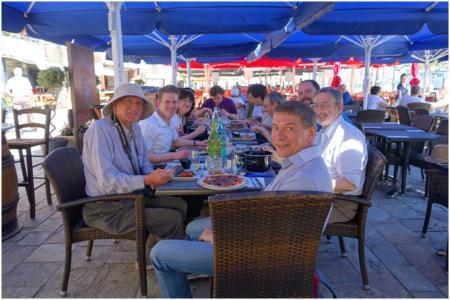Experts brainstormed on SiPM Time Performance
A workshop on the Time Performance of Silicon Photomultipliers has been successfully held in Calvi, Corsica between May 7- 8, 2015. It took place in the beautiful fortified harbour of Calvi which, according to legend, used to be a home of Christopher Columbus.

Calvi harbour and Citadel.
The event was co-organized by Dr. Sergey Vinogradov, Senior Marie Curie Fellow working within the SiPM project in the QUASAR Group, and Dr. Paul Lecoq, Senior Physicist at CERN and Technical Director of the European Centre for Research in Medical Imaging. It focused on the factors influencing the timing performance of SiPMs and on one of the most challenging demands from high energy physics and medical imaging applications to SiPM technology: How to approach a 10 picosecond timing resolution using SiPMs as scintillation detector ?
The organizers invited 27 internationally recognized experts in Single Photon Avalanche Detectors (SPADs) and Silicon Photomultiplier (SiPM) concept, design, technology, physics, statistics and applications from CERN, Cockcroft Institute/University of Liverpool, LBNL, Fermilab, TUDelft, Politechnico Milano, Sherbrook University, Stanford School of Medicine, General Electric, Perkin Elmer, SensL, KETEK, FBK, MEPhI and others to discuss this hot topic in three sessions:
- SPAD design optimization for fast timing (Convener: Sergey Vinogradov)
- SiPM architecture for fast timing (Convener: Edoardo Charbon)
- Analog versus Digital SiPM (Convener: Dennis Schaart)
The discussions were very intense and detailed. They yielded a better understanding of the full potential of scintillation detector timing. The organizers hope that the results will help pave the way for the next generation of time-of-flight positron emission tomographs and other SiPM-based detector systems.

Lunch break at the harbour: Sergey Vinogradov with colleagues.